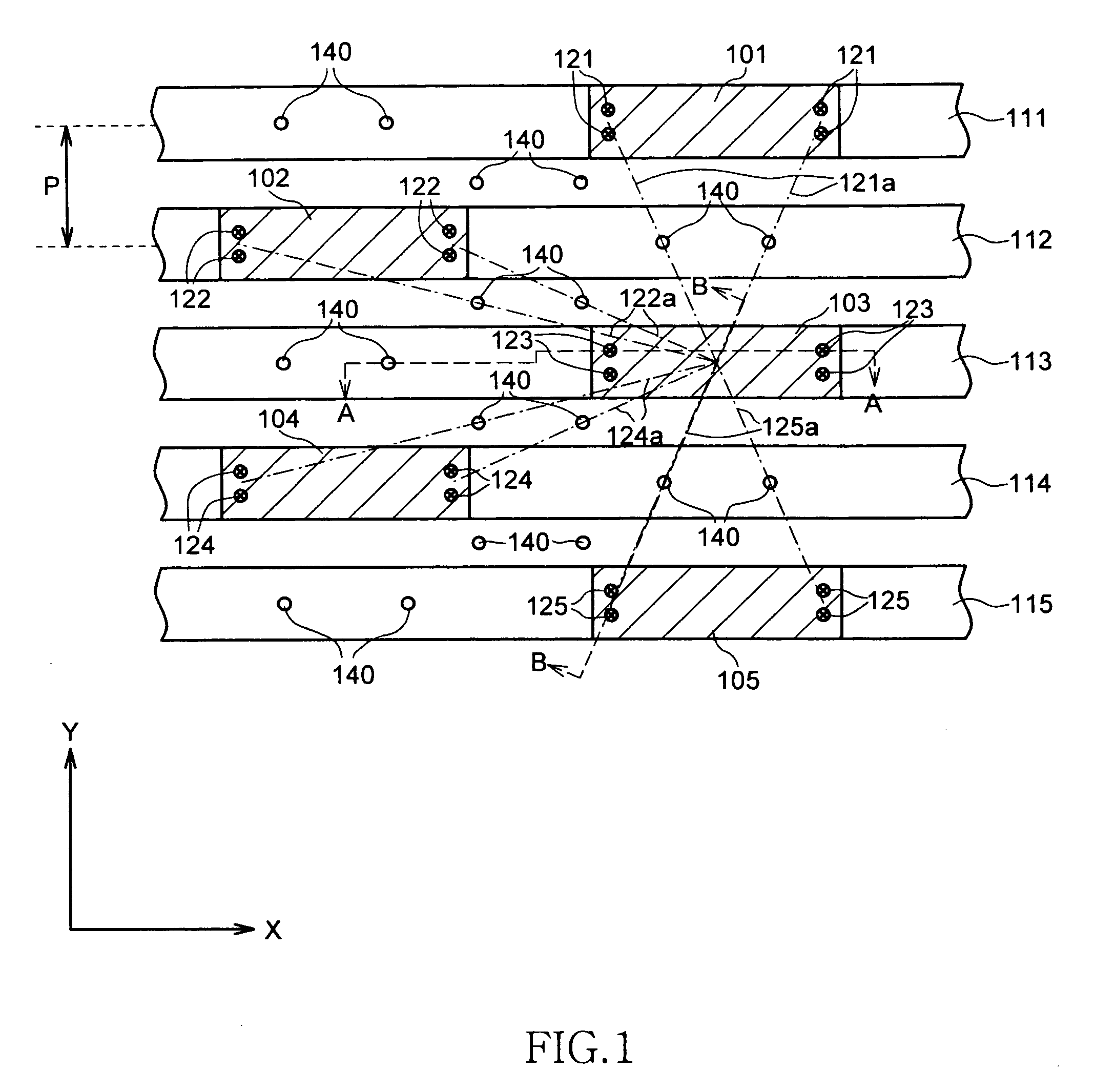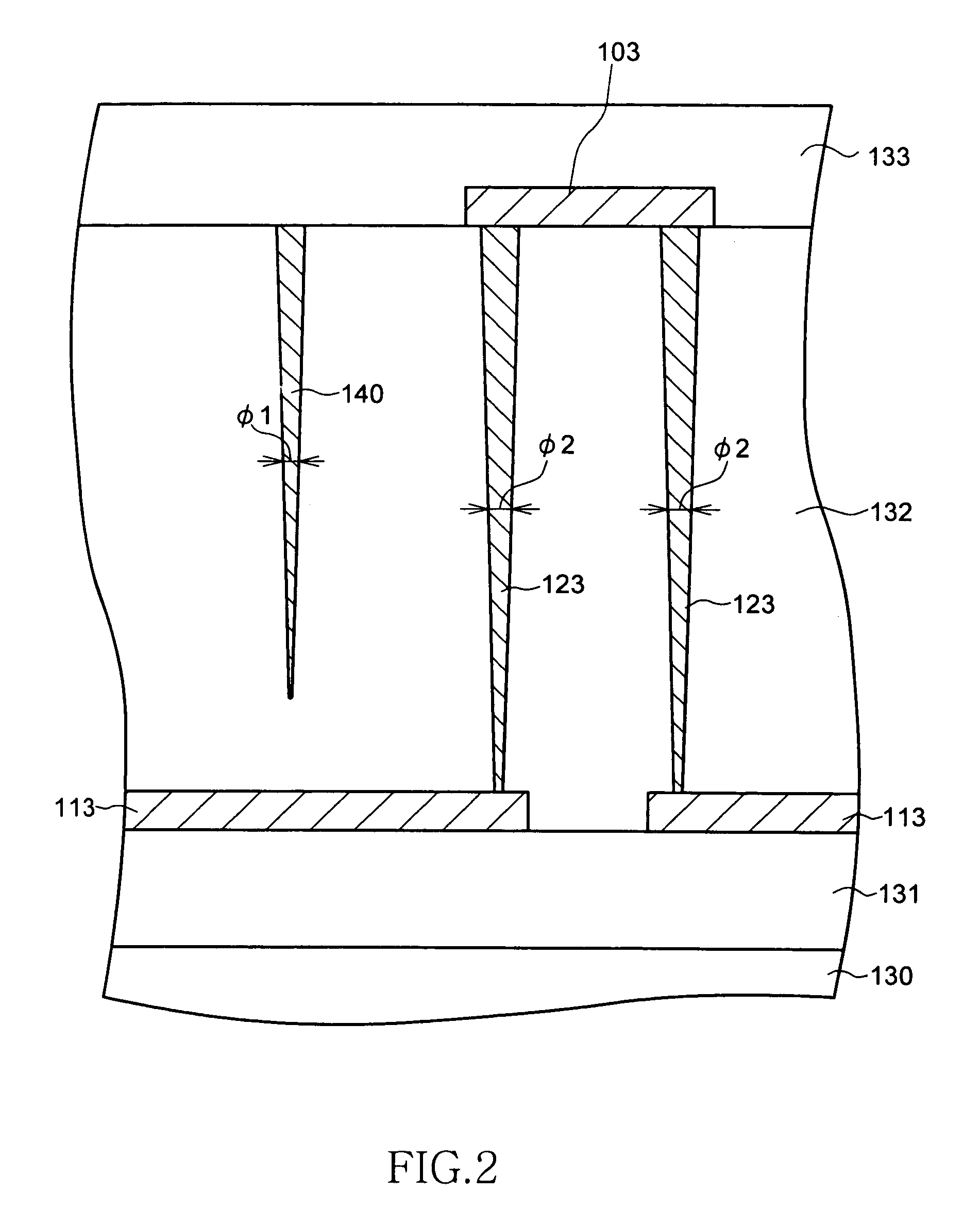Semiconductor device and method of disconnecting fuse element
a technology of a fuse element and a semiconductor, applied in the field of semiconductor devices, can solve the problems of increasing the actual situation of the number of defective memory cells included in one chip, increasing the chip area, and increasing the risk of breaking at this part, so as to reduce the influence of adjacent fuse elements and their periphery, reduce damage applied to various lower-layer wirings and to the semiconductor substrate, and efficiently attenuate the laser beam
- Summary
- Abstract
- Description
- Claims
- Application Information
AI Technical Summary
Benefits of technology
Problems solved by technology
Method used
Image
Examples
Embodiment Construction
[0041]Preferred embodiments of the present invention will now be explained below in detail with reference to the accompanying drawings.
[0042]FIG. 1 is a schematic top plan view showing a configuration of main parts of a semiconductor device according to one embodiment of the present invention. FIG. 2 is a schematic cross-sectional view along a line A-A shown in FIG. 1, and FIG. 3 is a schematic cross-sectional view along a line B-B shown in FIG. 1.
[0043]As shown in FIG. 1, the semiconductor device according to the present embodiment has plural fuse elements 101 to 105. The fuse elements 101 to 105 are connected to lower-layer wirings 111 to 115 extending to the X direction, respectively.
[0044]In the present embodiment, the fuse elements 101 to 105 connected to the adjacent lower-layer wirings 111 to 115 are deviated to the X direction, respectively. That is, the fuse elements 101 to 105 are laid out in zigzag manner. This layout is made to secure high degree of location and to incre...
PUM
 Login to View More
Login to View More Abstract
Description
Claims
Application Information
 Login to View More
Login to View More - R&D
- Intellectual Property
- Life Sciences
- Materials
- Tech Scout
- Unparalleled Data Quality
- Higher Quality Content
- 60% Fewer Hallucinations
Browse by: Latest US Patents, China's latest patents, Technical Efficacy Thesaurus, Application Domain, Technology Topic, Popular Technical Reports.
© 2025 PatSnap. All rights reserved.Legal|Privacy policy|Modern Slavery Act Transparency Statement|Sitemap|About US| Contact US: help@patsnap.com



